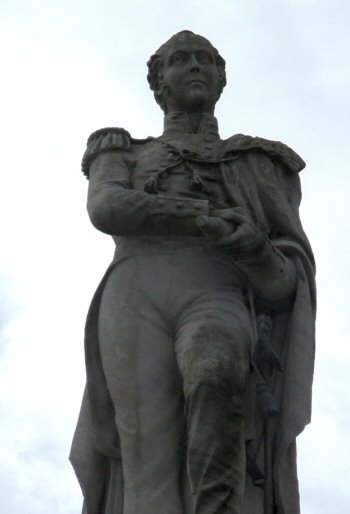Captain Crozier: Last Man Standing [Collins Press,
The search for the North-West (sea-trade) Passage was the Holy Grail of the nineteenth century. It was contended that if only the west coast of America and Canada – and Japan, China and the Far East – could be accessed by ship to the North, then many thousands of sea miles, most of them dangerous, could be avoided by traders, saving months of time and fortunes in resources.
It was 12 July 1845 when Crozier set sail, as second-in-command of Sir John Franklin’s expedition in search of the North West Passage. Their two ships, the HMS Erebus and HMS Terror set sail with 129 hand-picked crew. Aware now of the dangers and problems, these ships had been especially commissioned by the Admiralty of the British Navy for the task in hand.
They were to fail, with the loss of all crew, in a spectacular fashion. It was fifty expeditions and fourteen years later before some remains of the ill-fated expedition were discovered – strangely by another local explorer,
The expedition’s first winter saw the ships trapped in ice and there were three casualties. However, over the next two winters the number of fatalities increased to almost one in five of the crew. The ships’ surgeons noted these were mainly of the ‘sledging parties’ sent out to reconnoitre the encircling pack ice in search of a possible escape route. There was a clear correlation between these fatalities and the extra pack rations allotted to these sledging parties. A close examination revealed botulism in the special ‘capsules’ supplied to the Navy in London by one Stephan Goldner. An enquiry into the methods of that man produced a horror story.
Ships’ provisions then were dry, salted or can-sealed (though not hermetically-sealed as today). The Admiralty gave the provisions’ tender to Goldner whose tender was much the lowest – suspiciously so! Goldner’s Patent Meats was based in Houndsditch, one of
Aboard ship where fuel was plentiful, it was possible that the worst effects were mitigated by adequate cooking that neutralised the bacteria’s toxins. This was not so for the sledging parties who were commonly allocated extra rations to cope with ice-pressure ridges sometimes as great as 60′ high. On the ice Goldner’s provisions were merely warmed and the deadly pollutants were activated and ingested.

